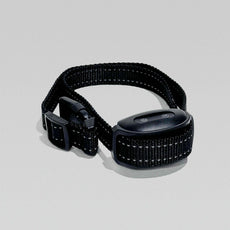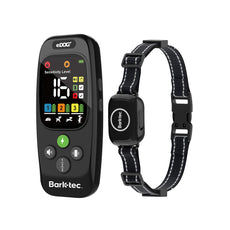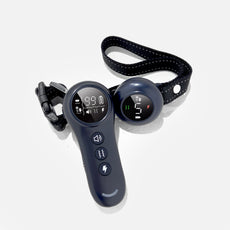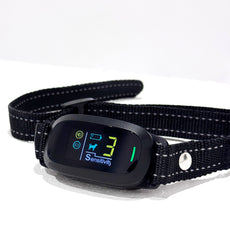You may love your dog to bits, but if their nuisance barking bothers you to no end, it might be time to start looking for canine bark collars.
What is the purpose of a canine bark collar?
Canine bark collars are effective training and conditioning devices to help your dog learn to distinguish acceptable behaviours from unacceptable ones.
Typically, a static shock collar is used to curb excessive barking, which usually occurs when you’re not at home. But remote canine bark collars can also be helpful when out and about with your pup to provide a quick correction or safe means to get their attention in situations where your dog has become overexcited, aggressive, or simply isn’t listening.
There are three primary types of modern anti-barking dog collars: static shock, citronella, and vibration. Each is designed to correct your dog’s behaviour when their automatic sensor recognises barking, and many can also be switched to remote operation, making them a flexible training tool.
Choosing the best anti-bark collar for your dog depends on its size and temperament, and we recommend you ask your vet for advice before you buy. If you and your dog are new to using a collar for behaviour correction, you might consider starting off with a vibration collar or a citronella collar.
Citronella collars release a short, sharp spray of citronella—a smell dogs notoriously dislike—at your dog’s jaw and often beep before they discharge. They are a good choice of collars for barking dogs if your dog has a sensitive nature or doesn’t like water.
For the more stubborn pooch, a static shock collar can work wonders. Their intensity can be easily tailored to provide the minimum stimulation needed to distract your dog from barking, and their auto-sensor can also be adapted.
Dog barking collars that utilise vibration as a deterrent are primarily used for old or deaf dogs.
How long does it take for a canine bark collar to work?
How long your dog takes to understand the boundaries you’d like to implement is largely dependent on you (although some dogs are more stubborn than others!). Because our dogs look to us for guidance and to feel safe, we need to make sure any training tools and methods are considered and conducted in a safe way.
It’s important that canine bark collars are used to correct bad behaviour as soon as it happens. There’s no point using the collar after your dog has stopped barking or isn’t showing any signs of aggression. This is important because your dog needs to directly correlate the unwanted action with the static stimulation felt from the collar for it to be an effective training device. Failure to provide context for your dog will result in a failure to rectify the unwanted behaviour—something which reflects a failure of the owner or trainer and not the dog or collar. This can also lead to an increase in negative behaviour from your dog, who won’t understand what they are experiencing or why.
Responsibly used—especially when used in conjunction with positive training reinforcement such as praise or treats—canine bark collars can yield results in just a few wears. Ensure you are present for the full duration of the first time your dog wears their anti-barking dog collar, so you can reward good behaviours and manage any unexpected reactions to the new sensation.
To ensure your static shock collar is effective from day one, it must be fitted and placed properly on your dog. Once you’ve charged the battery, ensure that the collar is on the lowest possible settings before placing the collar around your dog’s neck.
Dog collars should sit high on the neck, with the strap oriented so the two contact pins are aligned with the side of the throat. For the collar to be effective, the pins must make direct contact with the skin. If you’ve got a longer-haired dog, you may need to trim their neck fur back to make this possible.
The no bark dog collars featured on our online store have a range of sensitivity settings for what level of sound they will be activated at (when on auto-control) and at what shock stimulation intensity. Almost all anti-barking dog collars are waterproof (which is good if you have a dog prone to dunking their whole head in the water bowl or who drools a lot!), and many allow you to collect data on the number of times the bark sensor was activated while you were out—giving you a direct indication of how effective the collar is, and whether you need to adjust your shock stimulation settings.
Where can I buy a canine bark collar near me?
At eDog, we’ve got a range of canine bark collars to suit your training needs. Whether you’re after a citronella dog collar or canine shock collars which use static, you can find the most suitable solution for your dog at our online store.
Our website also features comprehensive introductory and training guides to canine bark collars, so you and your dog can get back to living harmoniously as soon as possible. Be sure to check out our Bark Collar Buying Guide for more information.







